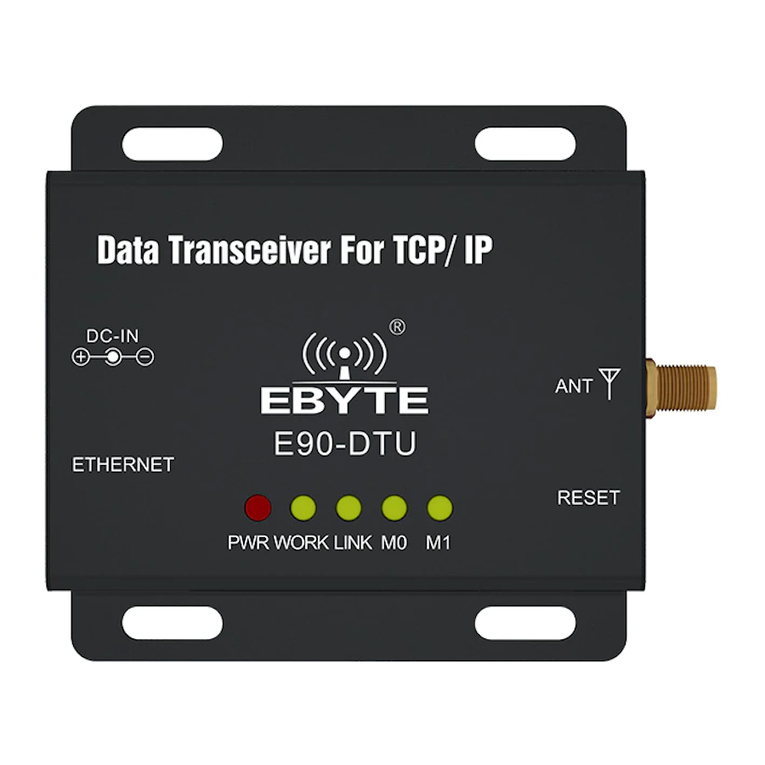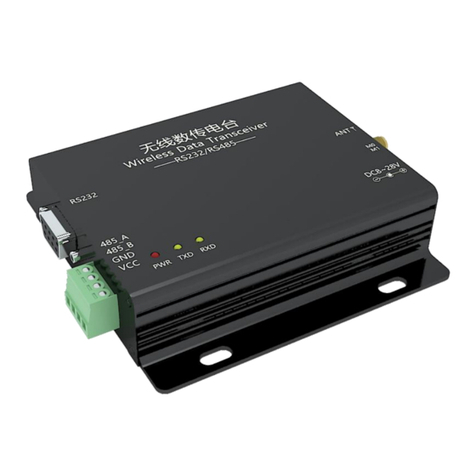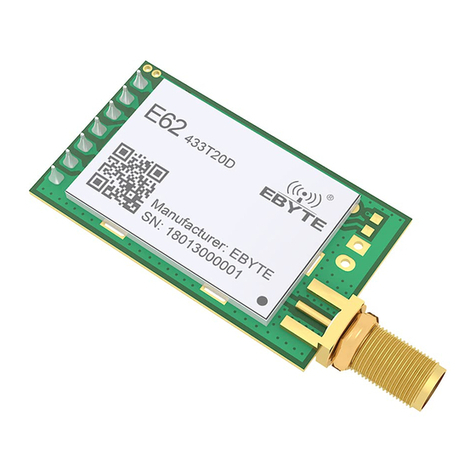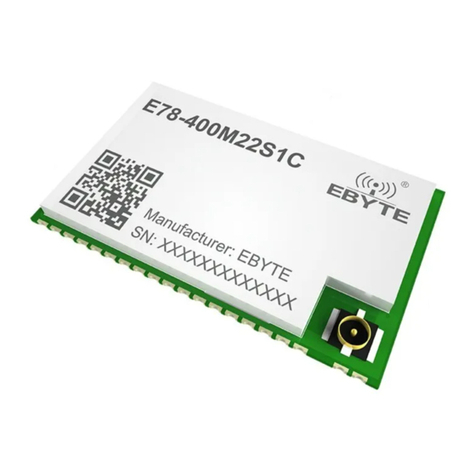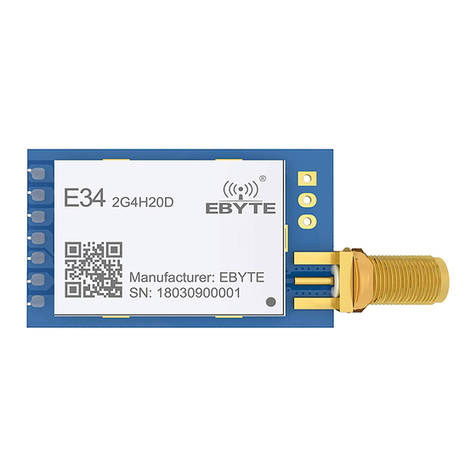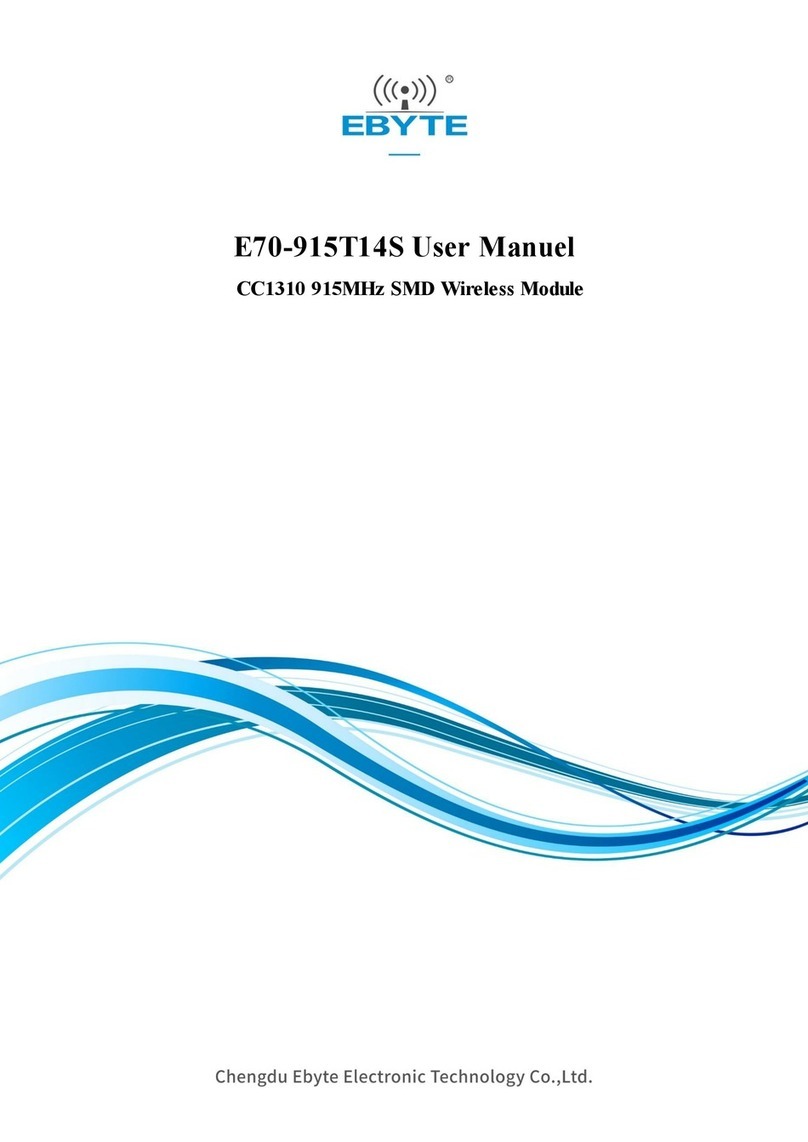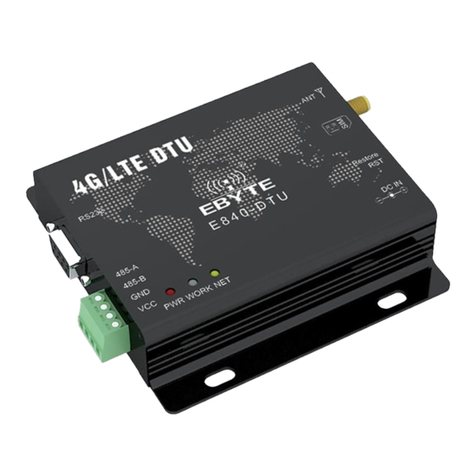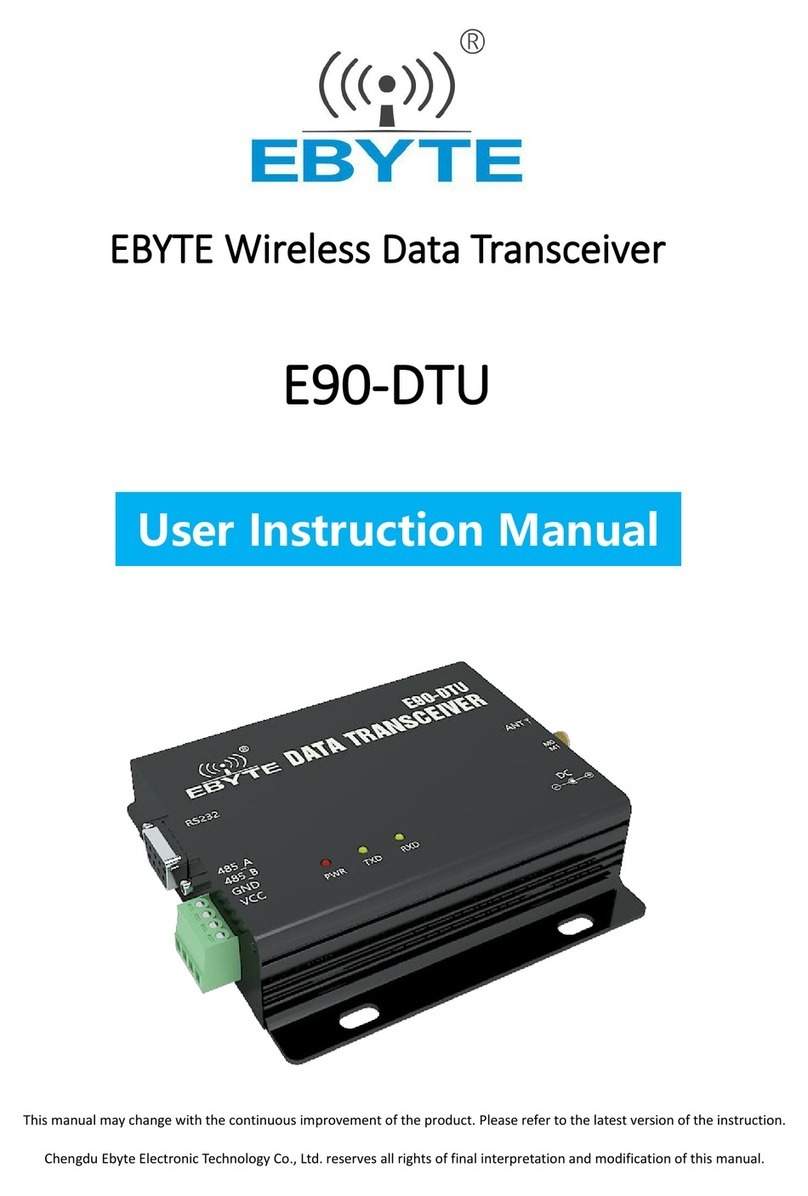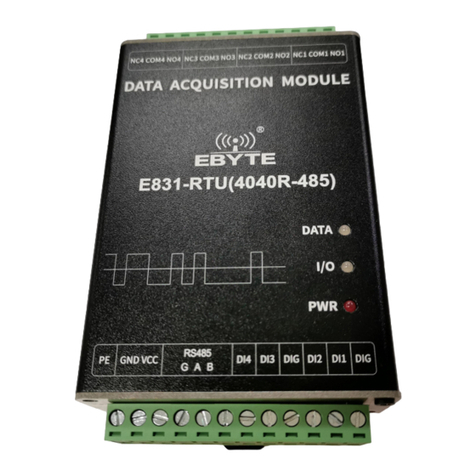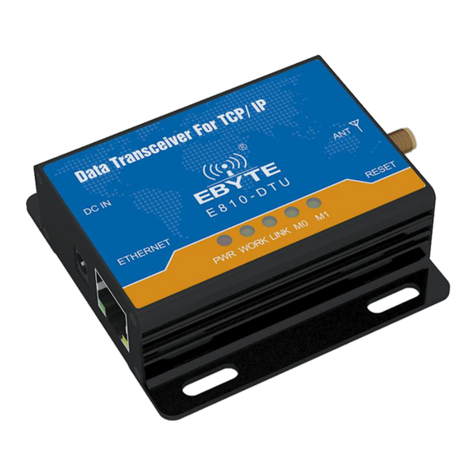1. Introduction
1.1 Brief introduction
E800-DTU(Z2530-2G4-20) is a wireless data transceiver based on ZigBee technology with function of transparent
transmission, protocol transmission, AT configuration, etc. Wireless data transceiver working as a communication medium,
as well as the fiber, microwave, the same line, has a certain scope of application: it provides some special conditions in the
private network monitoring signal real-time, reliable data transmission, with the features of low cost, convenient
installation and maintenance, diffraction ability, flexible network structure, range of coverage, suitable for the occasion
of dot and scatter, complex geographical environment , connecting with PLC, RTU, rain gauge, level gauge and other data
terminals.
1.2 Function Features
❖All the core components are imported originally , compared with the current imports of digital transceiver , we are
the most advanced, most cost effective and the smallest one.
❖Transmission power is optional, all technical indicators have met the European industry standards.
❖Use temperature compensation circuit, the frequency stability is better than ±2PPM.
❖With operating temperature range: -40 ℃ ~ +85 ℃, adapting to a variety of harsh working environment.
❖All with aluminum alloy shell, compact, easy installation, good heat dissipation; perfect shielding design, good
electromagnetic compatibility and strong anti-interference ability.
❖Power reverse protection, over-protection, antenna surge protection and other multiple protection functions,
greatly increase the reliability of the transceiver.
❖Powerful software features, all parameters can be programmed to set: such as power, frequency, air data rate,
address ID, etc.
❖Ultra-low power consumption, standby current is 20mA (the power consumption of power saving mode and sleep
mode is lower), the transmitting current ≤ 350A (1W).
❖With watchdog and accurate time layout, in the event of an exception, the module will automatically restart and
continue to follow the previous parameters to operate.
1.3Product Features
